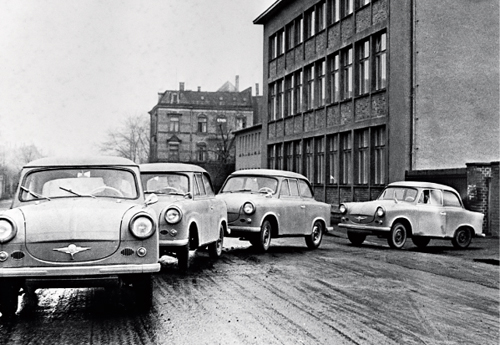According to the old joke, a customer walked into a Trabant dealer and asked if he could order a car with a two-tone paint job. ‘Well, why not also have a Blaupunkt radio and stereo tape player, or wait a little longer’, the saleman replied, ‘and you can have it with air-conditioning and antilock brakes, too.’ ‘That’s not funny,’ the punter protested. ‘You’re making a fool of me.’ ‘Well,’ the salesman said, ‘you started it.’
But behind the image of a gruesomely utilitarian and ersatz East German car that customers had to wait years to get is a story of skill and industrial pride. Zwickau, home of the Trabant, had made the sound two-stroke DKW car since before World War II and this formed the basis for postwar developments. The two-stroke motor, though not especially efficient, was cheap to make and to maintain, owing to its low number of moving parts. A noteworthy innovation for the Trabant was the use of Duroplast – a phenolic plastic reinforced with a wool or cotton fibre filler – for unstressed bodywork components.
When the Berlin wall finally came down, thousands of East Germans and others from the former Soviet satellites used the car to stream west in search of new homes and jobs. Soon, though, their new and more environmentally conscious hosts began to complain about both the pollution of the smoky two-stroke exhaust and the remarkable persistence of Duroplast, which has defied attempts at recycling. Nonetheless, the Trabant remains the symbol of a huge structural change for Germany that few expected they would live to see.

Packaging for the ‘Trabbie’ toy, 1970.

Not that pretty, but the two-stroke Trabant let Eastern European owners hold onto the precious gift of mobility.